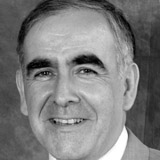 High quality films for children have a special place in our cultural landscape, an appeal which even embraces the medical humanities. To reach beyond children to the adults in their entourage requires a sure touch for tapping into the universal across the lifespan. In addition, many of the underlying fables are vehicles for deep and complex messages.
High quality films for children have a special place in our cultural landscape, an appeal which even embraces the medical humanities. To reach beyond children to the adults in their entourage requires a sure touch for tapping into the universal across the lifespan. In addition, many of the underlying fables are vehicles for deep and complex messages.
As teased out in Bruno Bettelheim’s remarkable Uses of Enchantment, the brooding themes of abandonment, death, witches, and injuries may allow children to come to terms with their fears and conflicts, particularly with parents and authority, in remote symbolic terms.
As cinema is the most widely shared medium for reflection in the medical humanities, it is not surprising that children’s movies have cast a light on a wide range of clinical subjects with a light hand, including ageing in Up, traumatic brain injury in the Wizard of Oz, compliance with Mary Poppins, REM sleep behaviour disorder in Cinderella, and headache in Harry Potter.
Yet little did I suspect that one of the year’s most successful movies to date would provide a bizarrely contemporary fable. On the surface, the Lego Movie is a riotous roller coaster of entertainment, with a jaw dropping and obsessive digital dedication to rendering all surfaces and materials as if made of Lego, from the water in the shower to the clouds in the sky.
It is also packed full of cinematic and cultural references, from Metropolis, through westerns, Star Wars, superheroes, Terminator, to Harry Potter. Tracking a deceptively anodyne everyman, Emmett, through his updated 1984 existence (in a great poke at a famous coffee chain, gladly paying for over priced coffee), the jokes come fast and furious, with no brick of cultural or historical reference left unturned, from Michaelangelo to Abraham Lincoln.
Emmett chances on the “Piece of Resistance” and is hailed as “The Special” who might stymie the plans of the evil villain, President/Lord Business (a suitably tongue in cheek name in a movie from one of the largest toy corporations in the world).
As it turns out, these plans are to glue every brick and mini-figure in place definitively, denying individuality, unpredictability, and spontaneity. In a Bettelheimian touch, this turns out to parallel a late breaking plot of a human child and father where the father wishes to preserve his huge Lego collection by gluing it together, against the wishes of the son to be creative and original.
This vivid and smart simile struck home forcefully with me over the past few weeks during a public consultation process with the Irish government over advance care directives. Currently, clinically led advance care planning is incorporated in both Irish Medical Council and Irish health service guidelines, and various professional bodies such as the Royal College of Physicians in Ireland run courses in advance care planning.
Both the rigidity of the father and Lord Business nicely reflect the folly of trying to cast our future in stone (or bricks), a neat parallel to the impossibility of capturing the richness and complexity of events of later life in rigid and legally binding advance care directives.
We have been here before. At the heart of the great plays of Molière is the folly of humans trying to artificially maintain an ideal state that does not take account of future reality, whether through storing up spiritual credits (Tartuffe), money (The Miser), or medical advice (Le Malade Imaginaire).
As trends in theatre going change, few of the general public, or our students and trainees, will see or even read Molière—the more’s the pity—but his joyous sense of human finitude is neatly captured by the central theme of this movie.
Given that one of the key tasks of medicine is to broker uncertainty with our patients and society, combatting undue rigidity in societal approaches to complexity is a professional imperative. A related battlefield of this nature in Ireland is an attempt to suppress the concept of “best interests” entirely from new legislation on assisted decision making, in stark contrast to the nuanced, but central role of “best interests” in the UK Mental Capacity Act 2005.
The current Irish approach appears to arise from a rigid and doctrinaire reading of the interpretation of the Committee on the Rights of Persons with Disabilities. It preserves “best interests” for children, but is disembodied from the practice of clinical medicine, and is perhaps indicative of differing strength, advocacy, and philosophical approaches of the constituencies for intellectual disability and gerontology.
A final neat parallel in the Lego Movie is to neuroplasticity in that while each individual brick is clearly inflexible (as any parent who stood on one will attest), it is the overall combination of creativity and reconfiguration that allow for constant growth and redesign, mirroring the adapting and remodelling that takes place following brain injuries such as stroke.
In terms of positioning on medical humanities curricula, going to the Lego Movie without children attached may pose certain barriers, but you will be hard placed to offer a neater conjunction of social and physical constructs—and deconstruction.
Desmond O’Neill is a consultant physician in geriatric and stroke medicine and immediate past president of the European Union Geriatric Medicine Society.
The post Desmond O’Neill: Combatting rigidity in medicine appeared first on The BMJ.